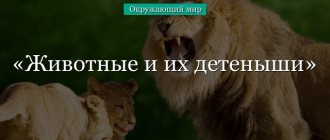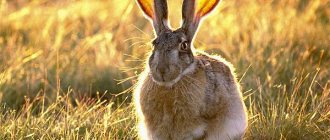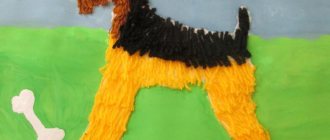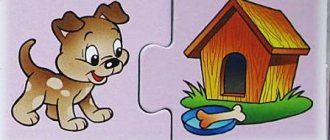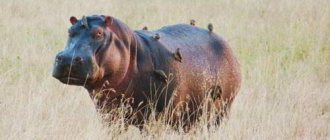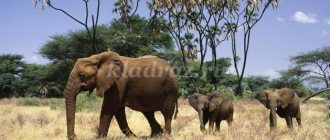If you want your pet to live long and be healthy, you need to feed it properly. With food, he must receive all the substances necessary for growth and development. The diet must be balanced, junk food is excluded.
Why animals need to be fed correctly
With food, pets receive useful substances that go towards building cells. Products travel through the esophagus into the stomach, where they are digested using acidic juice. Then it goes to the intestines and undergoes a series of transformations - carbohydrates are converted into glucose, lipids into fatty acids, proteins into amino acids, etc.
The resulting elements are absorbed into the blood through the intestinal walls, while unprocessed food leaves the body with feces. Glucose, fats, amino acids, and other substances in the blood enter the cells, which use them for growth and development.
Accordingly, the health of the pet depends on how high-quality the product is. Only harmful components can be extracted from rotten food. They are toxic, so the poison will spread throughout the body, permeate every cell and can destroy it. The result is problems with the heart, liver, kidneys, and weak immunity.
Basic feeding rules
To keep your pet healthy, you need to not only monitor the quality, but also the quantity of food. Don't overfeed - he doesn't need obesity. An adult pet should be fed 2 times a day, puppies and kittens according to age:
- 2 months – 6 times every 3.5 hours;
- 3-4 months – 5 times every 4 hours;
- 4-6 months – 4 times every 4-5 hours;
- after 6 months – 3 times with an interval of 6 hours;
- after 10 months - 2 times a day.
Buy a comfortable bowl, not too shallow and not too deep. It is desirable that it be metal with a stand made of non-slip material - such models are strong, durable, and easy to clean. Alternatively, you can buy ceramic dishes, but they break easily.
Plastic bowls are not the best option. They can be made from low-quality material that can cause poisoning. In addition, plastic often cracks.
To teach your pet to eat properly, take the dishes away as soon as he finishes eating. When the animal refuses food, wait 10 minutes and take the bowl away, even if he did not touch the food. Put her back in place no earlier than the next feeding time.
Important: provide your pet with constant access to water. It should be clean, fresh, preferably filtered.
What's prohibited
Never give your pet hot or very cold food. It should be at room temperature. Fried, sweet, fatty, pickled, peppered foods are harmful to the animal.
Do not feed your pet table scraps or give him treats that you eat yourself. They can not only provoke poisoning, but also cause death.
Milk
Cow's milk contains lactose. Lactase is responsible for the breakdown of this substance, an enzyme that is almost not produced in the body of adult cats and dogs (the dog digests milk a little better). The drink can cause allergies, diarrhea, and itching in your pet.
Pets react especially poorly to low-fat products. When fat is removed from milk, vitamins A and D are removed, which contribute to the absorption of proteins and calcium. Because of this, the bones become weaker, and milk is absorbed worse than usual.
Fatty foods and bones
Do not give your pets animal fat, either cooked or raw. It can cause pancreatitis. It is better to replace it with vegetable oil. It is better absorbed, digested, has a good effect on the functioning of the heart and blood vessels, and makes the coat better.
Bones, especially tubular bones, are dangerous. They can get stuck in the esophagus, causing suffocation, intestinal obstruction, piercing one of the digestive organs, and causing the animal to suffer. If you want to pamper your pet, buy processed dog bones or cat sticks sold as treats (eg, Country Treats, Titbit). They strengthen gums, eliminate plaque and caries.
Sweets
Do not give your pets lollipops, chocolates, ice cream and other sweets. They are the cause of excess weight, metabolic disorders, and dental problems.
Chocolate (especially dark chocolate), coffee and caffeine contain methlixanthins, which are very dangerous to animals. They can provoke:
- diarrhea, vomiting;
- breathing problems, heart rhythm disturbances;
- thirsty;
- increased urination;
- excessive activity;
- tremors, spasms;
- death.
It’s better to buy a special treat at the pet store and give it as a reward for a correctly executed command or just because.
Products with xylitol
Xylitol is found not only in chewing gum or candy, but also in nut butters. It can provoke additional synthesis of insulin, which is responsible for transporting glucose to cells. The result is seizures, liver failure, and brain damage.
Onions, green onions, garlic
Cats and dogs don't eat them raw anyway, but they can eat cooked vegetables. Important: do not give onions and garlic in any form, even after steaming. They irritate the digestive tract and can damage red blood cells.
Cats are more susceptible to these spices, while dogs may be harmed if onions and garlic are eaten in large quantities.
Salt and salty snacks
Never give your pet foods high in salt. It will cause thirst, excessive urination and even poisoning, the symptoms of which are:
- vomit;
- diarrhea;
- depression;
- tremor;
- heat;
- convulsions;
- death.
Nuts
Nuts contain a lot of oil and fat, which can cause vomiting, diarrhea and even pancreatitis (inflammation of the pancreas).
Alcohol
Never, under any circumstances, give your animal alcohol. Don’t listen to “good” neighbors who claim that a glass of vodka will save you from poisoning. In this case, take the animal to the doctor immediately.
All it takes is a sip for your pet to become poisoned. Alcohol can cause vomiting, diarrhea, problems with coordination, difficulty breathing, coma and even death.
Natural food or prepared food?
There is a lot of debate about what is better: ready-made food or natural food. Many people agree that a puppy or kitten up to 3 months should be fed natural food. Further opinions differ:
- Fans of feed convince that homemade food is unable to provide animals with all the substances they need, no matter how carefully the diet is selected. Another plus is that drying helps save time spent searching for food and preparing food. It is also convenient if you need to travel to another city.
- Fans of natural food are convinced: if you properly develop a diet and periodically add vitamin and mineral complexes to your food, your dog will be healthy and happy. They focus on the fact that ready-made food is often of poor quality, it is difficult to check its composition, and examination costs a lot of money. In addition, the digestive tract will get used to natural food and will not be able to digest heavier foods.
Cats and dogs can be fed both natural food and prepared food. The main thing is to choose quality products and choose the right diet.
It is important to remember that you cannot mix natural food with ready-made food or even alternate. The reaction is immediate - the pet may begin to vomit bile. Even if this does not happen, the functioning of the digestive system will be disrupted.
Hibernation
Brown bear sleeping on a tree
There are species of animals that can fall into a special state similar to sleep. It's called hibernation. In this state, animals save their energy reserves and try to survive unfavorable conditions. For example, when there is a lack of oxygen or food, some species of fish bury themselves in the mud and awaken only after environmental conditions improve. Hedgehogs and bears also hibernate.
Is it possible to give raw eggs?
Eggs are good for pets. They contain:
- protein;
- amino acids;
- vitamins A, D, E, B;
- omega-3;
- antioxidants;
- calcium;
- selenium;
- zinc.
There is no Salmonella in eggs, but the bacteria can be found in chicken droppings. If he stains the shell and it cracks, salmonella can get inside.
To avoid problems, do not buy products with cracked shells. Before giving your pet raw eggs, be sure to wash them in hot water.
Features of dog nutrition
Feed your dog after an active walk, otherwise stomach volvulus may occur. Even if this does not happen, the pet will be passive, since a full stomach will not allow it to run and jump normally.
Dogs are omnivores with a predatory bent. They have sharp teeth and a short gastrointestinal tract, which is better suited for digesting meat than plant foods. However, dogs produce enzymes that are responsible for the absorption of glucose and starch, and are able to break down carbohydrates - this is what true carnivores lack.
Animal classification
Wild animals illustration
There are five classes of vertebrates in total:
- Mammals (animals) are warm-blooded creatures that feed their young with their own milk. Their body temperature is always higher than the ambient temperature. There are different types of animals, among them there are many families. Families unite animals related by common external and physical characteristics (for example, lions, tigers, cheetahs, leopards, pumas and even domestic cats are united in the Felidae family).
- Reptiles (reptiles) are the closest ancestors of dinosaurs. They differ from other animals in that their body is covered with small shields called scales. This group includes snakes, lizards, crocodiles and many others.
- Amphibians (amphibians) are animals that live both in water and on land. They can spend part of their lives underwater (tadpoles) and then partially come out to live on solid land (frogs). Amphibians include newts, frogs, and toads.
- Fish are representatives of wildlife that live exclusively under water. They grew gills, allowing them to receive oxygen from the aquatic environment, and fins, which help control their bodies. The fish have a streamlined (very smooth, like a long drop) shape and are covered with scales.
- Birds are some of the most wonderful representatives of wildlife. They are the only animals that can fly and are covered with feathers. Birds have only two legs, the upper limbs have been transformed into wings.
What you need to know when buying food
You need to approach the purchase of food responsibly so as not to run into counterfeit food that contains no useful substances at all. First of all, we must take into account that there are such categories of food:
- economy;
- standard;
- premium;
- super premium;
- holistic.
They differ in ingredients, nutritional value, composition, and digestibility. Economy class feed is made from cheap raw materials, the amount of meat usually does not exceed 30%. The composition of one brand of feed is often variable and depends on the availability of raw materials at certain times of the year.
Holistic food is made entirely from natural products, there are no preservatives, flavors, or dyes.
When purchasing, pay attention to the composition. If it's not listed, don't take it. The components on the label are written in descending order. Give preference to a product where animal protein is listed first.
Wildlife Habitats and Evolution
African savannah
Wild animals have an amazing ability to adapt to environmental conditions. They inhabit the entire globe from the South Pole to the North Pole. The ability of animals to adapt to the world around them is called adaptation. Evolution helps them survive - a natural process of selecting the strongest representatives of the species. She can greatly modify creatures to suit their survival. For example, some species of dinosaurs evolved to become modern birds. This helped them survive.
Important domesticated species
Domesticated animals can be divided into two groups:
- predatory;
- herbivores.
Each group contains several of the most important species. For example, among the predators are dogs, cats and forest ferrets (ferrets). The group of herbivores is represented by cows, pigs, goats, sheep, horses, donkeys, oxen, camels, deer and llamas.
When did man domesticate the goat?
The goat is one of the first farm animals domesticated by humans. This happened about 11-9 thousand years ago in the Middle East. The ancestor of the domestic goat is the wild bezoar goat. The animal still lives in some regions of Asia. Originally there were 3 different types of domestic goats, but later the differences between them disappeared.
Domestic goat
When did man domesticate the cow?
The ancestor of the cow is the wild bull (tur). Its domestication began in the early Neolithic era (10-3 thousand years ago) after goats, pigs, and sheep in the territory uniting Altai, India and Western Asia. Modern research shows that the cow does not have a single ancestor - it is characterized by several ancestral lines.
When did man domesticate the sheep?
The domestication of the sheep occurred about 8,000 years ago in regions that correspond to modern-day Syria, Turkey and northern Mesopotamia. The ancestor of the domestic goat is considered to be the mouflon.
Domestic sheep
When did man domesticate the pig?
According to archaeological finds, the domestication of wild pigs began in the Middle East (Tigris Basin) approximately 12,700-13,000 years ago. Moreover, at first they were kept in the wild in a semi-wild state. Pigs easily adapt to new conditions and are also omnivorous. Therefore, there were no problems with their taming.
Interesting fact : the domestication of pigs occurred simultaneously in several regions. For example, animal remains dating back 11,400 years have been found in Cyprus. And in China they were domesticated 8,000 years ago.
When did man domesticate the horse?
The domestication of horses by ancient people occurred at the beginning of 4 thousand BC. e. This is indicated by bit marks found on the teeth of fossil species. In 3 thousand BC. e. different breeds have already appeared. The earliest evidence of this process is associated with the Botai culture (modern Kazakhstan).
domestic horse
When did man domesticate the donkey?
The first donkeys became domesticated 3000 BC. e. From Egypt and Mesopotamia they gradually spread to other countries. It is interesting that all domestic individuals are united by a common ancestor - the African wild ass, which lives in our time, but its population is gradually declining. Asian donkeys (kulans) still cannot be tamed.
Interesting: Living and inanimate nature - what is it, definition, description and photo
When did man domesticate the camel?
Around 2000 BC e. people domesticated camels. In their usual conditions (dry steppes, deserts), they are considered the strongest and most resilient animals in terms of transporting goods. The wild ancestor of the camel is the one-humped species - the dromedary, but now they can only be found in the form of wild animals, previously imported and released into the wild.
Domestic camel
When did man domesticate chicken?
The ancestor of all domestic chickens is a wild species - the bank junglefowl. Under natural conditions, it lives in Southeast Asia. The approximate period of domestication is 9500-3300 BC. e.
Interesting fact : in the 21st century, chicken is considered the most common bird species on the planet. Her low intelligence is a myth. The bird has a language, the ability to count and interact with its relatives.
When did humans domesticate the rabbit?
According to the most common version, the domestication of rabbits occurred much later than other animals - in 600 AD. e. This was done by French monks. However, recently this statement has come under criticism. Scientists cannot confirm it either with genetic research or archaeological finds. The question remains open and requires study.
domestic rabbit
When did man domesticate the dog?
The dog was domesticated about 17-10 thousand years ago, depending on the region. First of all, animals began to live next to people in the Middle East and Europe, then in the east of Eurasia, in Central Asia. The wild ancestor of the domestic dog is considered to be a wolf or a jackal - there is no single version among researchers.
When did humans domesticate the cat?
The cat settled next to humans later than the dog - about 10,000 years ago. This happened in the so-called Fertile Crescent (Middle Eastern region). Cats have retained the main common feature with their wild ancestors - the ability to catch prey. Their domestication occurred in several waves in different parts of the world.
When did humans domesticate the ferret?
The ancestor of the domestic ferret or ferret is the common ferret, which is found in the Mediterranean. DNA analysis indicates that the process of domestication began about 2,500 years ago. It was previously believed that this happened in Ancient Egypt, but there is not enough evidence to support this.
Ferret (domestic ferret)
Selection
The main feature of the selection of domestic animals is the presence of a huge variety of their qualities. Breeders use them to develop different breeds. Thanks to the work of researchers, over several centuries, such breeds of pets have been bred that it is impossible to recognize the original animal in them. As an example: Berkshire and Yorkshire pig breeds, English heavy draft and racing horses, Southdown and Leicester sheep, short-horned cows. Breeders were able to give some species the desired heredity.
English heavy truck
If you take the original animal and compare it with the “improved” version, it will be clear that the latter is significantly superior to the original species in all respects. An English bull has a weight of 800-1200 kg, a Russian peasant sheep - 22-27 kg, a Southdown breed of sheep - up to 180-270 kg (it is also capable of producing about 5 kg of wool). But English pigs gain an average of about 180 kg in one year (for example, a Russian pig can achieve this result in only 3 years).
An interesting example is the Merino sheep, as breeders have changed its properties several times depending on human needs. Sheep farmers have been working on wool for many decades - length, thickness and other parameters.
Modern breeders are trying to create breeds of animals that would have several useful properties. For example, they strive to make cattle so that they not only produce a lot of milk, but are also able to fatten well, and sheep - to produce more wool and meat.

